- Clone
- 9-4D2-1E4 (See other available formats)
- Regulatory Status
- RUO
- Workshop
- V MA199
- Other Names
- M-CSFR,CSF-1R, FMS, CSF-1 Receptor
- Isotype
- Rat IgG1, κ
- Ave. Rating
- Submit a Review
- Product Citations
- publications
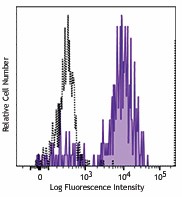
-

Human peripheral blood monocytes were stained with biotinylated CD115 (clone 9-4D2-1E4, filled histogram) or biotinylated rat IgG1, κ isotype control (open histogram), followed by SAV-PE.
| Cat # | Size | Price | Quantity Check Availability | Save | ||
|---|---|---|---|---|---|---|
| 347314 | 100 µg | £157 | ||||
CSF-1R, also known as CD115 and M-CSFR, is a single-pass type I membrane protein and member of the platelet-derived growth factor receptor family. Structural studies of CD115 have described an Ig-like extracellular domain, a transmembrane domain, an intracellular juxtamembrane domain, a split tyrosine kinase domain, and a C-terminal tail receptor. Receptor activation induces homodimerization in addition to phosphorylation and ubiquitinylation of intracellular residues. The natural ligands of CD115 include M-CSF and IL-34. CD115 directly influences tissue macrophage and osteoclast differentiation and proliferation. It is expressed on monocytes/macrophages, plasmacytoid and conventional dendritic cells, and osteoclasts.
Product DetailsProduct Details
- Verified Reactivity
- Human
- Reported Reactivity
- African Green, Baboon, Cynomolgus, Rhesus
- Antibody Type
- Monoclonal
- Host Species
- Rat
- Immunogen
- C-fms transduced Kirsten strain murine sarcoma virus transformed NRK cells.
- Formulation
- Phosphate-buffered solution, pH 7.2, containing 0.09% sodium azide.
- Preparation
- The antibody was purified by affinity chromatography and conjugated with biotin under optimal conditions.
- Concentration
- 0.5 mg/ml
- Storage & Handling
- The antibody solution should be stored undiluted between 2°C and 8°C. Do not freeze.
- Application
-
FC - Quality tested
- Recommended Usage
-
Each lot of this antibody is quality control tested by immunofluorescent staining with flow cytometric analysis. For flow cytometric staining, the suggested use of this reagent is ≤0.25 µg per million cells in 100 µl volume. It is recommended that the reagent be titrated for optimal performance for each application.
- Application Notes
-
It has been reported that CD115 can be rapidly internalized, especially when samples are exposed to room temperature. Approximate 33% decrease in CD115 expression has been observed between 0 and 4 hours after sample collection, while overnight incubation of the cells results in complete CD115 downregulation. Pre-treatment with EDTA and low temperatures (2 to 8°C) helps in maintaining surface expression of CD1151.
-
Application References
(PubMed link indicates BioLegend citation) -
- Breslin WL, et al. 2013. J Immunol Methods. 390(1-2):1 PubMed
- Product Citations
-
- RRID
-
AB_2650968 (BioLegend Cat. No. 347314)
Antigen Details
- Structure
- Single-pass type I membrane protein and is 150 kD.
- Distribution
-
Monocytes/macrophages, plasmacytoid and conventional dendritic cells, and osteoclasts.
- Ligand/Receptor
- Macrophage Colony Stimulating Factor (M-CSF) and IL-34.
- Cell Type
- Dendritic cells, Macrophages, Monocytes, Osteoclasts
- Biology Area
- Immunology
- Molecular Family
- CD Molecules, Cytokine/Chemokine Receptors
- Antigen References
-
1. Sherr CJ, et al. 1989. Blood 73:1786
2. Roussel MF, et al. 1991. Nature 353:361.
3. Roussel MF, et al. 1989 P. Natl. Acad. Sci. USA 86:7924. - Gene ID
- 1436 View all products for this Gene ID
- UniProt
- View information about CD115 on UniProt.org
Related FAQs
- How many biotin molecules are per antibody structure?
- We don't routinely measure the number of biotins with our antibody products but the number of biotin molecules range from 3-6 molecules per antibody.
- Why do I have a weak CD115 staining?
-
It has been reported that CD115 can be rapidly internalized, especially when samples are exposed to room temperature. Approximate 33% decrease in CD115 expression has been observed between 0 and 4 hours after sample collection, while overnight incubation of the cells results in complete CD115 downregulation. Pre-treatment with EDTA and low temperatures (2 - 8°C) helps in maintaining surface expression of CD115. In addition, brief fixation of the cells with Fixation Buffer (Cat. No. 420801) for 10 minutes will block CD115 internalization.
Other Formats
View All CD115 Reagents Request Custom Conjugation| Description | Clone | Applications |
|---|---|---|
| Purified anti-human CD115 (CSF-1R) | 9-4D2-1E4 | FC,IP |
| PE anti-human CD115 (CSF-1R) | 9-4D2-1E4 | FC |
| APC anti-human CD115 (CSF-1R) | 9-4D2-1E4 | FC |
| PE/Cyanine7 anti-human CD115 (CSF-1R) | 9-4D2-1E4 | FC |
| PerCP/Cyanine5.5 anti-human CD115 (CSF-1R) | 9-4D2-1E4 | FC |
| Alexa Fluor® 488 anti-human CD115 (CSF-1R) | 9-4D2-1E4 | FC |
| Biotin anti-human CD115 (CSF-1R) | 9-4D2-1E4 | FC |
| Alexa Fluor® 647 anti-human CD115 (CSF-1R) | 9-4D2-1E4 | FC |
| Brilliant Violet 711™ anti-human CD115 (CSF-1R) | 9-4D2-1E4 | FC |
| PE/Dazzle™ 594 anti-human CD115 (CSF-1R) | 9-4D2-1E4 | FC |
| Brilliant Violet 421™ anti-human CD115 (CSF-1R) | 9-4D2-1E4 | FC |
| APC/Fire™ 750 anti-human CD115 (CSF-1R) | 9-4D2-1E4 | FC |
| TotalSeq™-A0398 anti-human CD115 (CSF-1R) | 9-4D2-1E4 | PG |
| TotalSeq™-C0398 anti-human CD115 (CSF-1R) | 9-4D2-1E4 | PG |
| TotalSeq™-B0398 anti-human CD115 (CSF-1R) | 9-4D2-1E4 | PG |
| TotalSeq™-D0398 anti-human CD115 (CSF-1R) | 9-4D2-1E4 | PG |
Customers Also Purchased
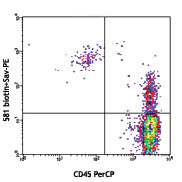
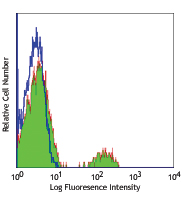
Compare Data Across All Formats
This data display is provided for general comparisons between formats.
Your actual data may vary due to variations in samples, target cells, instruments and their settings, staining conditions, and other factors.
If you need assistance with selecting the best format contact our expert technical support team.
-
Purified anti-human CD115 (CSF-1R)
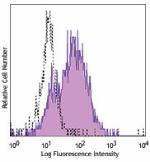
Human peripheral blood monocytes were stained with purified ... -
PE anti-human CD115 (CSF-1R)
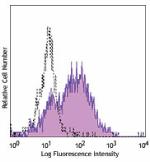
Human peripheral blood monocytes were stained with CD115 (cl... -
APC anti-human CD115 (CSF-1R)
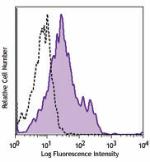
Human peripheral blood monocytes were stained with CD115 (cl... -
PE/Cyanine7 anti-human CD115 (CSF-1R)
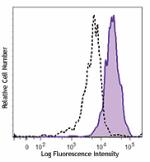
Human peripheral blood monocytes were stained with CD115 (cl... -
PerCP/Cyanine5.5 anti-human CD115 (CSF-1R)
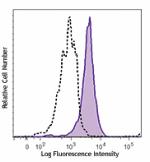
Human peripheral blood monocytes were stained with CD115 (cl... -
Alexa Fluor® 488 anti-human CD115 (CSF-1R)
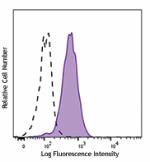
Human peripheral blood monocytes were stained with CD115 (cl... -
Biotin anti-human CD115 (CSF-1R)
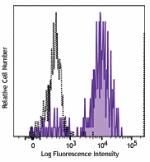
Human peripheral blood monocytes were stained with biotinyla... -
Alexa Fluor® 647 anti-human CD115 (CSF-1R)

Human peripheral blood monocytes were stained with CD115 (cl... -
Brilliant Violet 711™ anti-human CD115 (CSF-1R)
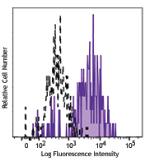
Human peripheral blood monocytes were stained with anti-huma... -
PE/Dazzle™ 594 anti-human CD115 (CSF-1R)
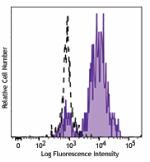
Human peripheral blood monocytes were stained with anti-huma... -
Brilliant Violet 421™ anti-human CD115 (CSF-1R)
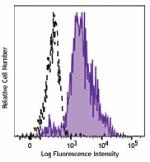
Human peripheral blood monocytes were stained with anti-huma... -
APC/Fire™ 750 anti-human CD115 (CSF-1R)

Human peripheral blood monocytes were stained with CD115 (CS... -
TotalSeq™-A0398 anti-human CD115 (CSF-1R)
-
TotalSeq™-C0398 anti-human CD115 (CSF-1R)
-
TotalSeq™-B0398 anti-human CD115 (CSF-1R)
-
TotalSeq™-D0398 anti-human CD115 (CSF-1R)

 Login / Register
Login / Register 







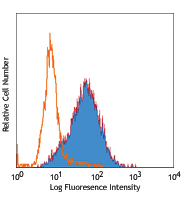
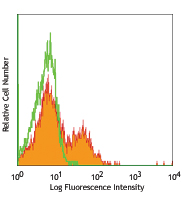



Follow Us